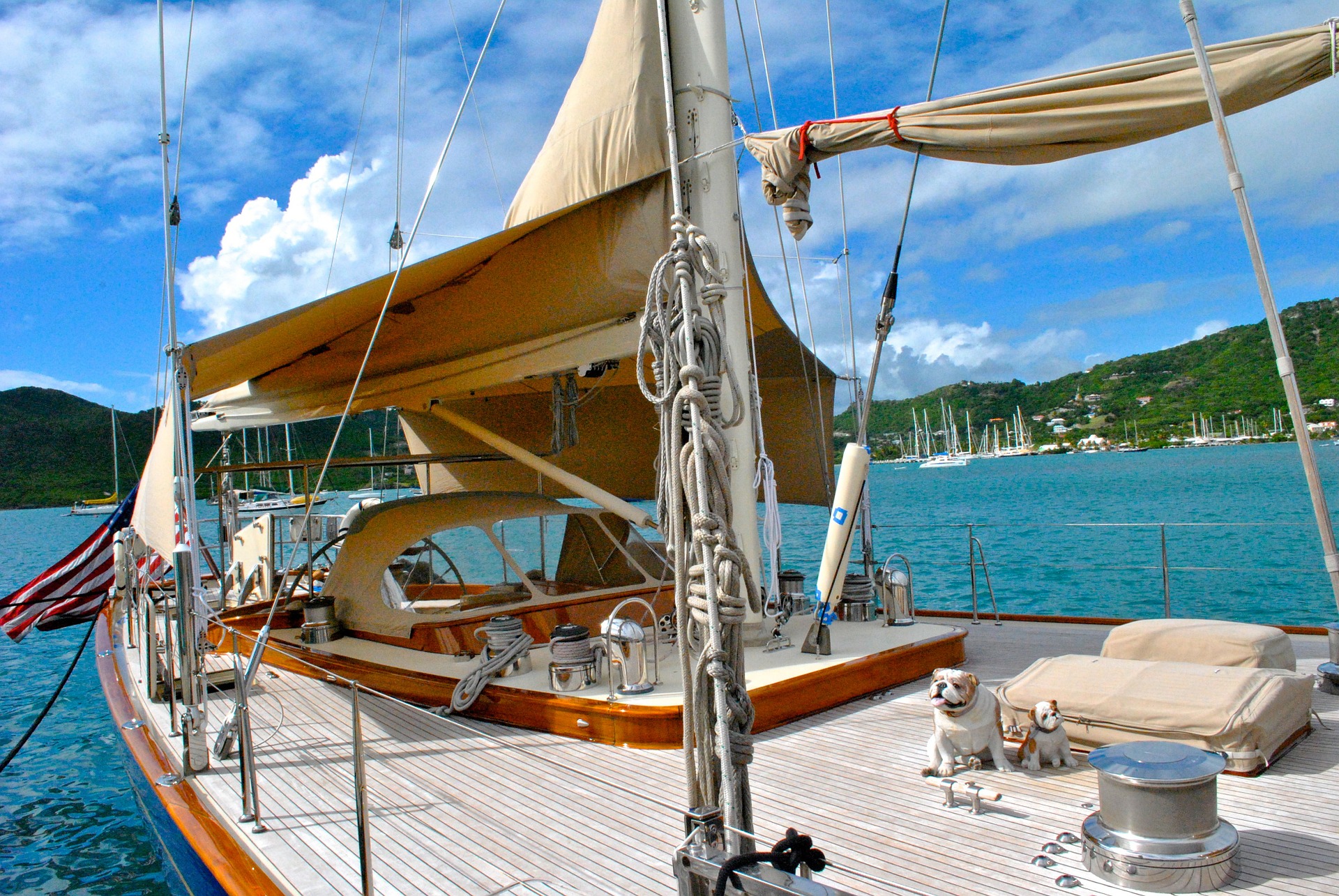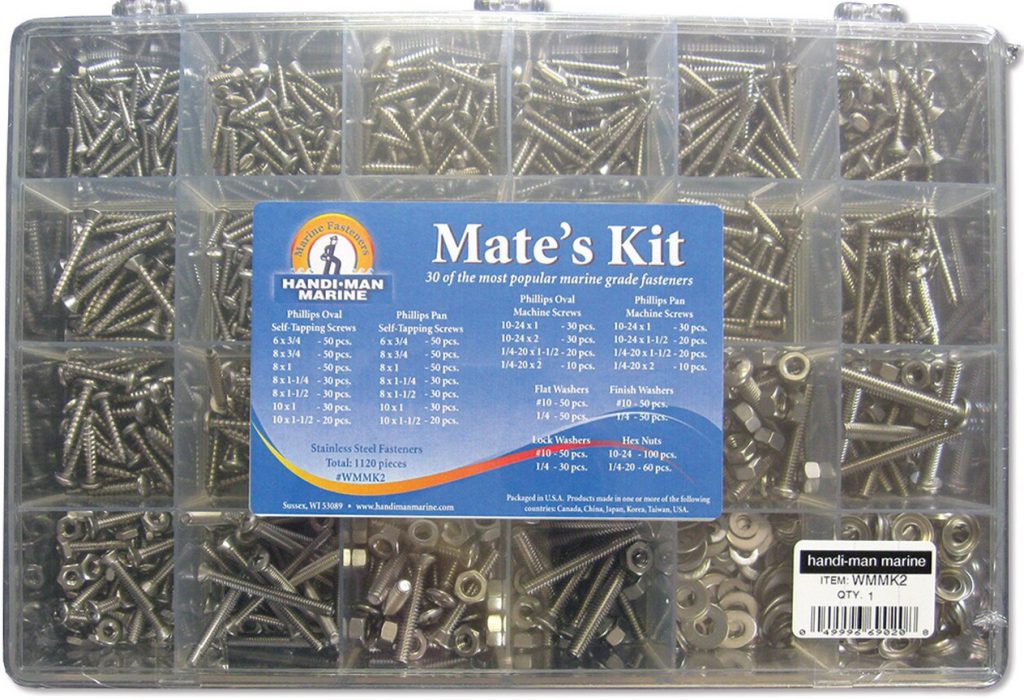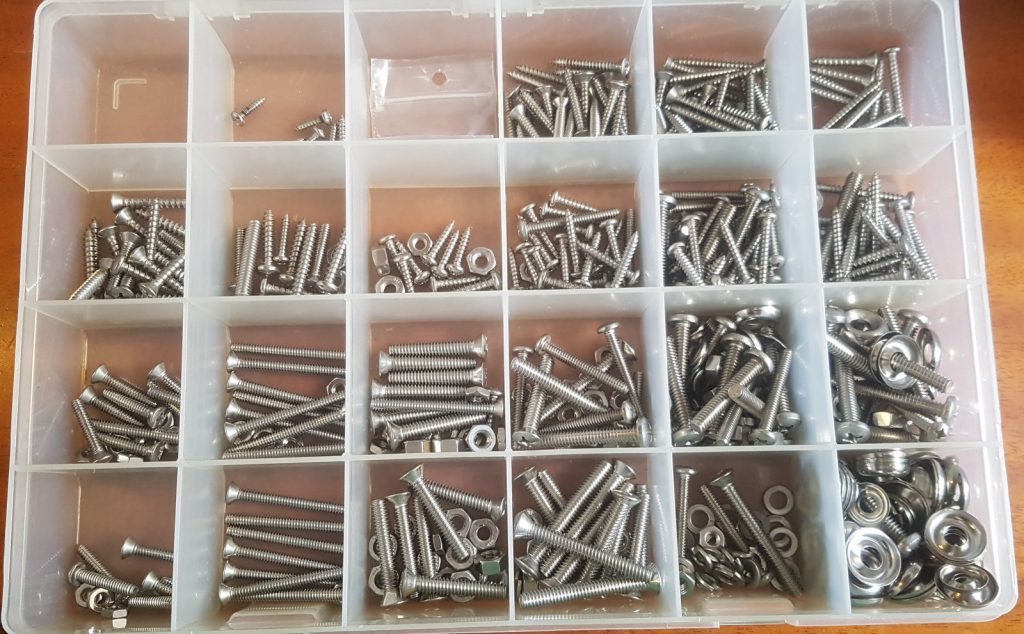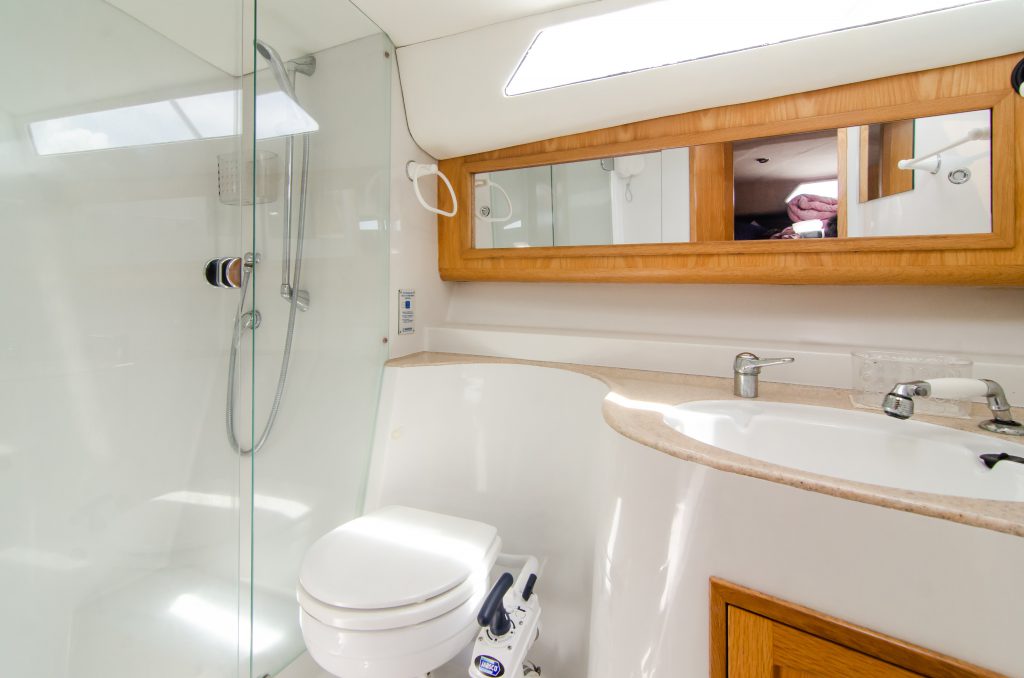My Five Favorite Things on my Boat
January 4th, 2021 by team

by B.J. Porter (Contributing Editor)
This is a very subjective list, and my list will be nothing like yours unless you have a similar boat and a similar lifestyle and way of using your boat.
For context, I’ve been cruising full time and living aboard my boat since 2012, though we’ve owned her for fifteen years. She’s a Hallberg-Rassy 53, a good sized cruising boat with a lot of creature comforts which we’ve sailed as far as Australia from our home port in Rhode Island. Before we bought her, I had a much lighter, simpler cruiser/racer which we raced and spent weekends and vacations on in New England. My experiences on this boat and past boats color my choices, and yours will too.
I also do most work on the boat, which influences my choices as much as being a liveaboard, blue water sailor.
1. Handi-man Marine Mate’s Kit
Yeah, it’s just a giant box of screws, nuts, washers, and bolts.
But in eight years of cruising, if there’s one thing I’ve reached for on almost every project I’ve done, it’s been the “Mate’s Kit” with an assortment of self-tapping screws, machine screws, washers and connectors. You’ll find has the most common sizes you’ll need, and they’re all marine grade stainless suitable for 90% of the projects I’ve done. It’s an expensive kit (retail is $140 to $170), but it has a lot of choices and is the most useful collection of hardware I’ve purchased.
The case is handy, with a marked key on the top cover to tell you what’s in each bin.
For comparison, here is a brand new set as pictured for sale, stuffed to the brim with nuts and screws:

And here is my depleted, rather pathetic looking kit, after many years and a couple of refill purchases.

2. Electrical Crimping/Tools
The second thing I’ve reached for the most has been my electrical tools – a decent crimper, stripper and cutting tool set. On a complex boat, you’ve got many electrical gadgets and devices, and now and then you need to swap out, fix, or upgrade something.
Over the years this included pumps, light fixtures, fans, float switches, electronics, USB charging ports, displays and gauges, and minor repairs to existing wiring. The ABYC (American Boat and Yacht Council) standard prefers crimped connections with heat-shrink protection.
A good crimper and stripper with a wide assortment of heat shrink butt splices and terminal connections is indispensable.
Honorable Mention: A good multimeter is also another must-have if you do electrical work.
3. Vesper XB-8000 AIS Transponder
When we left cruising, we only had an AIS receiver, not a transponder. We’d spent so much upgrading the instruments, so we decided not to spend the extra (a lot extra, with the choices in 2009/2010) for a transponder. Two years ago, we decided we’d had enough of not being seen, and I added a Vesper XB-8000 to our mix of electronics.
Though the unit was not the cheapest AIS transponder, it gave us a rich set of features and was easy to install and configure. And it has no compatibility issues with our existing chart plotters and navigation equipment.
But the best part? The XB-8000 has a built in Wi-Fi gateway to our NMEA 2000 data, so I can put our instrument data on my local area network. This is how I get data to iNavX on my iPad, and to any other laptops, tablets or phones on board connecting to the ship’s network and running navigation software. It’s simple to configure and is a flawless upgrade to our navigation capabilities.
4. Showers

We have nice showers on our boat. Very nice. A good shower in a separate stall goes a long way to moving your boating experience from “camping” to “living.” They’re good enough that we don’t bother with marina showers when we’re in a slip.
After a long day, whether it’s spent working on projects or playing on the beach or hiking in the woods, a nice, hot shower adds so much…comfort.
Not every boat is big enough for a separate shower stall, or carries enough water (and hot water) to make for a really good shower. But ours is, and it’s something that makes life on board so much happier.
5. Hard Dodger
Hard wind screens and dodgers are a signature feature of Hallberg-Rassy yachts. It’s distinctive, and not available from a lot of manufacturers. And we love it.
Our hard dodger offers so much comfort and safety offshore or in foul weather. We’ve taken green-water waves over the deck miles offshore and not had a drop of it hit the crew under the dodger. Heading into blowing rain and spray, the crew stays warm and dry.
That kind of comfort equates to safety when you’re sailing far offshore at night, when the temperature drop and the breeze picks up. Warm, dry crew is happy and alert crew. Being cold and wet is exhausting.
At first we thought it would be hot, and on a still day in the blistering tropical sun it’s not always the best place to sit. In those conditions, anything but air conditioning or full immersion in water will make you sweat. With a big front window and an attached Bimini, we’ve never found comfort to be a big problem.
Bonus Items
These are some top picks, but there have been a few other systems and features which are well thought out and made our lives better.
Whale Gulper 220 Pump – what’s so special about a shower sump pump? Our boat came installed with four-chamber diaphragm pumps in the showers. They were prone to clogging, so required a pre-filter to stop all hair and lint and other large material from getting into the pump. That filter needed regular cleaning every week or two, which wasn’t a pleasant job.
The Gulper 220 uses a single pump-action diaphragm, and doesn’t need a pre-filter. It sucks all that stuff out and through. I haven’t had to deal with a nasty filter or blocked or burned out pump since I added these six years ago.
1200W Heat Gun – the primary uses are softening hoses for removal and insertion, and heat-shrinking electrical connectors. It makes a lot of jobs easy and more clean.
Image Stabilized Binoculars – I thought image stabilized binoculars overpriced and not very useful on a boat until we got a pair. With them, we can read buoy numbers and ship names you can’t see on non-stabilized binoculars. At night you can see running lights on the horizon, so you can see what’s out there from the lights. There’s too much jiggle with regular binoculars to make an accurate call on lights. Then there are the birds and the whales and other cool things to see…
- Posted in Blog, Boat Care, Boating Tips, Cruising, Fishing, iNavX, Navigation, Sailing, Sailing Tips
- 2 Comments
- Tags: Boat, boat buying guide, Boat Care, Boating, Boating Tips, Sailboat, Sailing


January 04, 2021 at 10:07 pm, Ed Freitag said:
BJ Agree with all your choices, but I would add a good set of ratchet and open end wrenches. And maybe a tool to retrieve some of those fasteners when they fall into the deep recesses of the engine compartment.
September 14, 2024 at 4:15 pm, Mark said:
A good volt meter